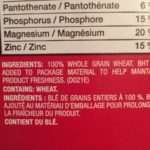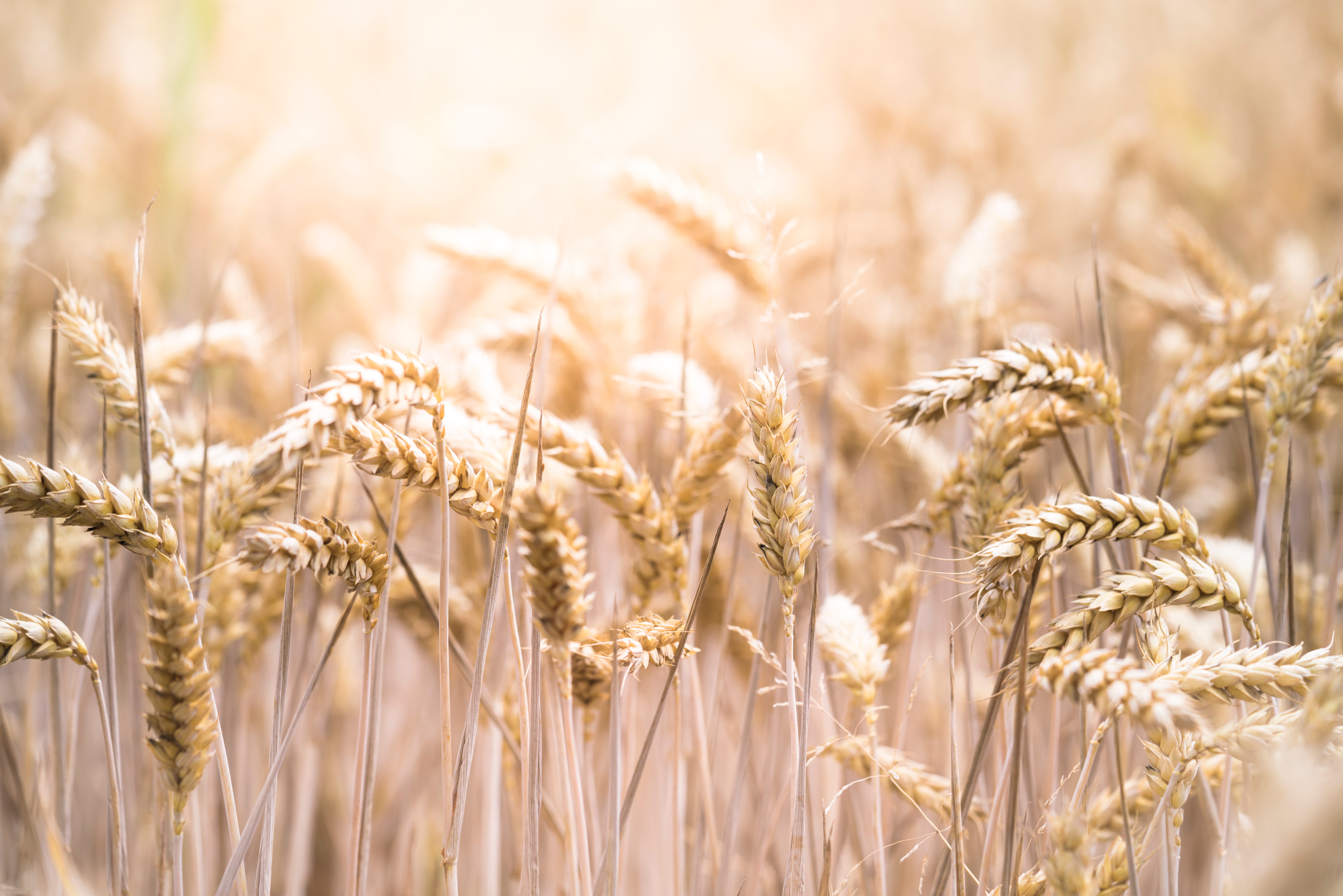Most of us have heard the term “whole grain” but how many of us truly understand what that even means?
I am willing to bet not that many and, if you think you do, I am willing to bet further that my article today will throw your confidence into question ( which is why I am writing it in the first place).
Health Canada tells us ( via the Canadian food guide) that whole grains are better for our health and that at least half of the total grains we eat should be whole grain… but they don’t really teach us all that well how to identify whole grain products or why it is we should be selecting them.
This is actually a much more complicated issue than you may think, as we will soon find out.
So What Is A Whole Grain Anyway?!
So what is a whole grain?!
Before we get to that, let’s first define what a grain is.
Essentially, grains are the seeds of plants.
These seeds contain three components: the bran, the endosperm, the germ.
Now we are ready to define a whole grain..
Well, like it sounds, a whole grain is literally the WHOLE grain, meaning it contains all three parts of the seed.
This is a good thing, but unfortunately many commercially available products are actually refined rather than whole grain.
What are refined grains?
Unlike whole grains, refined grains have had both the germ and bran removed, which results in significant losses of fibre, vitamins and minerals.
Food producers will often enrich the final product with many of the vitamins/minerals lost during processing, but refined goods like flour still end up being lower in certain critical nutrients including fibre and magnesium.
Coincidentally, Canadian’s tend to need more of both of these nutrients in their diets which is a big reason why consuming whole grains is so important.
How do you distinguish between whole and refined grains?
It’s actually harder than you think!
Health Canada wants us to eat whole grains, but some unusual labeling regulations can make it a challenge for consumers to figure out whether products are whole grain or not.
For example, did you know that multi-grain and whole wheat products are NOT considered whole grains?
Allow me to explain…
Although multi-grain products may be either marketed or perceived as better for you, the term multi-grain really only alludes to the fact there are multiple types of grains in the product.
It actually speaks nothing to whether or not a product is whole grain.
As for “100% whole wheat”, well a product in Canada can be labelled whole wheat and still have a significant portion of the germ and bran removed.
It’s a bit of an odd rule is it not?, it’s a bit like selling a potato with only part of the skin ( which is the healthiest part by the way!)
Don’t get me wrong, 100% whole wheat bread is still better than white bread, but it is not truly whole grain.
It goes even further…
Technically speaking, any grain that has been heavily processed should not be considered a whole grain.
There are exceptions though and some products labelled as whole grains are actually quite heavily modified.
For example, instant oatmeal is allowed to be identified whole grain because it is considered to retain its nutritional value despite the fact it is a physically processed version of the original grain ( which is what allows it to cook so quickly).
I actually disagree with this classification.
Steel cut oatmeal, which is much closer to the original form of the grain and takes significantly longer to cook, is also absorbed much more slowly by our bodies meaning it does not cause our blood glucose levels to rise as much, or as quickly.
Our bodies react much differently to steel cut vs instant oats, yet both are considered whole grain, which is adds another layer of confusion to the debate.
There is a similar difference between white bread vs whole wheat bread vs 100% whole grain bread.
Okay so how do I figure out if a product is whole grain?!
Examples of whole grain products include brown rice, wild rice, quinoa, corn, barley, oats ( as per above..), certain types of 100% whole grain cereals & other wheat based products.
Conversely, refined grains like white rice and bread made of white flour are considering refined grains.
Yes , refined grains are often enriched to put back some of the nutrients lost in processing, but their nutritional value still pales in comparison to whole grains.
Even whole wheat flour is not considered a whole grain, the reason being that the words whole wheat do not equate to a product being whole grain.
Sometimes tricky wording can make it challenging to identify whether or not a product is whole grain, but you can use what I call the Whole Grain Label Trick to help you out.
Take a look at the Ingredients List of the food in question, if you find the words 100% Whole Grain as the first words on the list… that is a good sign!

Shredded Wheat Cereal
For example, a wheat product containing 100% whole grain wheat should say whole grain whole wheat
You may also find the word’s Whole Grain somewhere on the product packaging.
Just remember that whole wheat is NOT the same as whole grain wheat.
Remember, when you choose whole grains you are choosing foods that will:
1. Be Closer to the foods most natural form
2. Be Higher in Fibre & important nutrients like magnesium
3. Have a more moderate & beneficial impact on your blood sugar
4. Contribute to a healthier body weight and reduced risk of chronic disease
Final Thoughts
Despite telling us that at least 50% of our grain consumption should come from whole grains ( I believe it should be closer to 100%), Health Canada’s labeling regulations really don’t make it that easy for the average consumer to accomplish this objective.
Even some products that are considered whole grain, like instant oatmeal, really are not the healthiest available version of the grain.
I know that it is confusing, but I hope today’s article has left you both enlightened and empowered when it comes to understanding how to identify whole grain foods and why it makes sense for you to make the effort to do so.
Until next time,
Andy De Santis RD MPH



